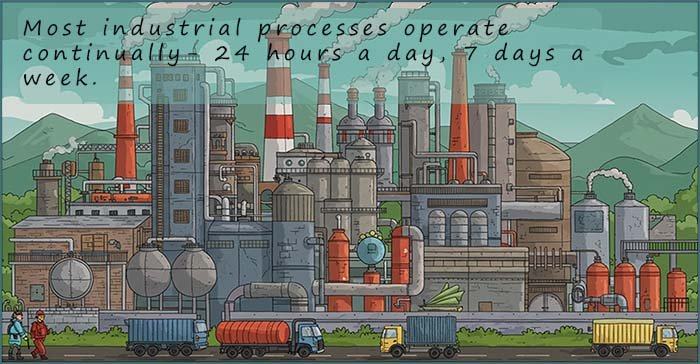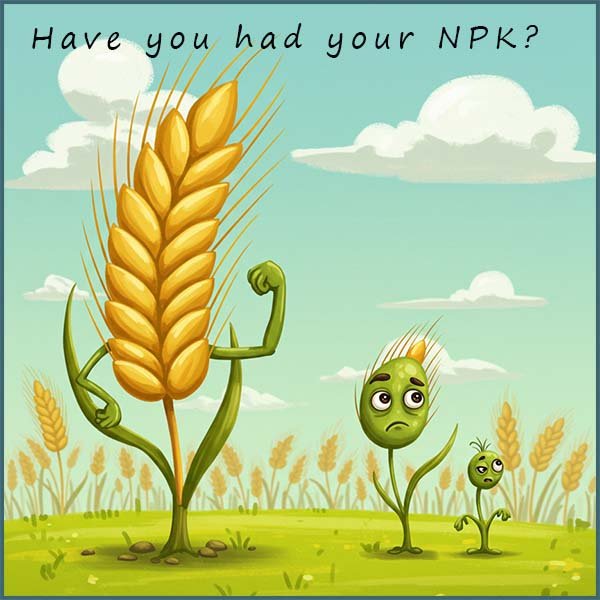Chemistry only
Fertilisers
 For healthy growth
and development plants need to take in a variety of minerals through their roots from the
soil. These minerals
include: nitrogen (N), phosphorus (P),
potassium (K), calcium (Ca), magnesium (Mg), sulfur (S) ,iron (Fe), chlorine (Cl),
manganese (Mn), zinc (Zn), copper (Cu), nickel (Ni) as well many other elements. Most of these
elements are found as soluble
ionic compounds in the soil. This means that plants are
absorbing essential ions from the soil through their roots.
For healthy growth
and development plants need to take in a variety of minerals through their roots from the
soil. These minerals
include: nitrogen (N), phosphorus (P),
potassium (K), calcium (Ca), magnesium (Mg), sulfur (S) ,iron (Fe), chlorine (Cl),
manganese (Mn), zinc (Zn), copper (Cu), nickel (Ni) as well many other elements. Most of these
elements are found as soluble
ionic compounds in the soil. This means that plants are
absorbing essential ions from the soil through their roots.
Perhaps the three most essential elements from the list above that a plant requires in relatively large amounts to be healthy are
nitrogen (N), phosphorus (P) and
potassium (K). The image opposite shows why these three elements
are essential. Basically nitrogen will make
"everything" above the soil grow well, phosphorus
will take care of "everything" below the soil and potassium
helps the plant to
tackle infections and deal with the stresses due environmental issues such as drought. Potassium generally improves the
vitality of the plant
You may think that plants could simply use the
nitrogen from the air as their source of this particular essential element. Unfortunately this is not the
case; simply because atmospheric nitrogen is a very unreactive gas and most plants
except some plants called leguminous plants are unable to use atmospheric
nitrogen. Leguminous plants such as clover and some
bean plants have nodules
(swellings) on their roots that contain bacteria that can convert
atmospheric nitrogen into nitrates (NO3-); which acts as a source
of nitrogen for the plant. Most plants
however rely on a source of nitrate ions (NO3-) in the
soil which they take in through
their roots, these nitrate ions acts as a source of
nitrogen for the plant. This
nitrogen is essential for the manufacture of proteins by the plant.
Farmers need to replace essential minerals that are removed from the
soil when crops are harvested. If the
soil is not
fertilised then any new crops which are planted will likely grow and develop in a poor condition and crop yields would likely be low due to the lack of essential nutrients and minerals in the soil.
Farmers will
add fertilisers to their fields to ensure there are sufficient
minerals present for healthy plant growth. Most
fertilisers are solids; normally powders or often they consist of
small granules called prills. Fertilisers are mostly ionic compounds
such as:
- Ammonium nitrate - NH4NO3 - supplies nitrogen to the plant
roots
- Ammonium sulfate - (NH4)2SO4 - supplies nitrogen
to the plant roots
- Ammonium phosphate - (NH4)3PO4 - supplies nitrogen
and phosphorus to the plant roots
- Potassium sulfate - K2SO4 - supplies potassium
to the plant roots
- Potassium chloride - KCl -supplies potassium to the plant
roots
- Calcium nitrate - Ca(NO3)2 supplies nitrogen and
calcium to the plant roots
- Calcium sulfate - CaSO4 supplies calcium to the plant roots
- Sodium nitrate - NaNO3 supplies nitrogen
and sodium to the plant roots
- Urea - CO(NH2) -supplies nitrogen to the plant roots
Most fertilisers are sold as a mixture of many different compounds; they will likely contain many of the substances
from the list above. These different mixes of
compounds will contain different amounts of nitrogen,
phosphorus and potassium. Depending on what crops are being
grown and on the condition of the soil the farmer will chose a
fertiliser with a specific
N:P:K content that will maximise
his yield of crops. In the image below you can see that the N:P:K
content of each of the fertilisers is different;
so each particular fertiliser maybe suitable for use with different
crops or soil types.

Fertilisers from phosphate rock
Phosphorus is one of the three main essential
elements
needed by
plants.
Phosphate rock is a
sedimentary rock that
contains high amounts of
minerals rich in
phosphorus.
Limestone
and
mudstone are two common examples of
phosphate rocks.
However
phosphate rock is
insoluble and so cannot be taken in by the
plants roots. To be useful as a source of
phosphorus for the
plant the
insoluble phosphate rock needs to be converted
into
soluble compounds containing phosphate ions (PO
43-)
which will supply the
phosphorus needed by the
plant.
To produce
soluble compounds containing the phosphate ion (PO
43-) the
phosphate rock
is reacted with
acids e.g.
Phosphate rock + sulfuric acid → calcium sulfate + calcium phosphate
The mixture of
calcium sulfate and
calcium phosphate is often called superphosphate or single superphosphate.
Phosphate rock + nitric acid → calcium nitrate + phosphoric acid
Phosphate rock + phosphoric acid→ calcium phosphate (often called triple superphosphate).
The actual reactions taking place here are fairly complex and are very unlikely to be asked for in a gcse chemistry paper.
As an example consider the industrial preparation of superphosphate (calcium sulfate/calcium phosphate mixture). The bullet points below give a rough outline of the processes that need to be considered in the manufacture of superphosphate
fertiliser.

- Step 1- would be the production of the acids needed e.g. sulfuric acid.
Manufacturing sulfuric acid on a large scale would involve burning large amounts of sulfur to produce
toxic gases such as sulfur dioxide. These gases would be
further processed and then dissolved in water to form sulfuric acid.
These reactions produce heat, that is they are exothermic. In industry heat is never be wasted and this heat will be used
later in the manufacturing process to evaporate and dry the final solid fertiliser
produced or to drive turbines to produce electricity which can be
used elsewhere in the chemical plant. The acid produced would be
much more concentrated than that used in the lab,
so more heat would be produced.
- Step 2 - the phosphate rock would have to be tested and quality assured to be certain it
contains the correct minerals in the correct
proportions. It may need further treatment before it can be used. The phosphate rock
used will most likely have been imported from various
locations around the world and so will likely have different compositions. The
phosphate rocks will be blended and mixed
to ensure that it contains the required minerals needed to produce a quality product with the correct amounts of all essential minerals and nutrients.
- Step 3- the mixed phosphate rocks will be crushed down
to produce small grains which will react completely with
the sulfuric acid. Crushing the rock increases its surface area; this will speed up the reactions taking place.
- Step 4 - the phosphate rock and sulfuric acid
would be mixed and allowed to react. The products would then be removed
and any waste products would have to be separated out and removed. The final solid fertiliser would be dried. Finally the solid fertiliser would be turned into granules by heating with steam.
These chemical plants producing the fertiliser will operate on a continual basis, 24 hours a day every day unlike the lab
process which is a small scale batch (one-off) process.


